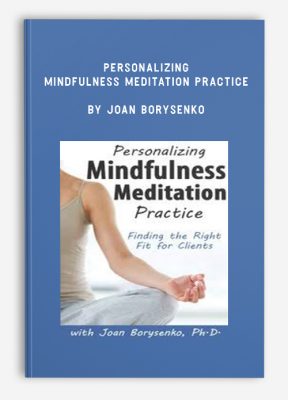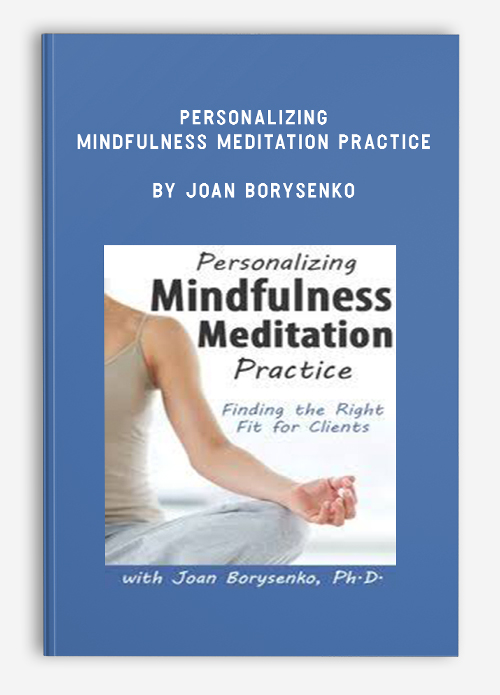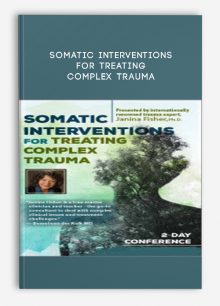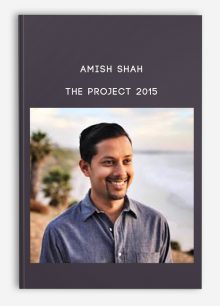Personalizing Mindfulness Meditation Practice by Joan Borysenko
$149.99 $44.00

Personalizing Mindfulness Meditation Practice by Joan Borysenko
**More information:
Get Personalizing Mindfulness Meditation Practice at Salaedu.com
Description
As meditation practice is increasingly being integrated into psychotherapy, therapists too often see it as a one-size-fits-all remedy. But these practices actually include a range of tools that can be more effective when tailored to a client’s history, personality organization, religious or spiritual orientation, cultural background, and presenting problems. We’ll explore how to help assure the right fit among three different families of practices (categorized by Dahl, Lutz, and Davidson) to better address the problems clients present. You’ll focus on exploring:
- The different families of practice, including attentional approaches that strengthen self-regulation, constructive approaches that enhance emotional wellbeing and healthy thinking, and deconstructive approaches that lead to insight
- What kind of practices are most useful with various clinical issues, including stress-related disorders, addictions, trauma, anxiety, depression, and interpersonal struggles
- The distinctive clinical applications of concentration meditation, centering prayer, and mindfulness practices
- How to expand your personal understanding of meditation by directly experiencing a range of contemplative practices
- Welcome
- Meditation Exercise
- Overview of Objectives
- Typology of Meditation and When to Use
- Mind-Body Meditation Beginning
- Meditation as Medicine
- Emerging Era of Personalization
- The Body-Mind
- The Relaxation Response
- Dawn of Mindfulness Meditation
- Mindfulness-Based Stress Reduction
- Emotional Intelligence, Cognitive-Behavioral
- How Can We Personalize Meditation Practice?
- Starting with Basics
- Brain Science
- Meditative Styles
- Attentional
- Meta-Awareness
- Narrowing, Open-Focused
- Types
- Constructive
- Alterations of Thoughts and Emotions
- Types
- Deconstructive
- Self-Inquiry and Insight
- Types
- Attentional
- Self-Help and Spirituality
- Teaching Meditation and Personalization
- Motivation
- Listen to Client
- Daily Progress Cards
- 5 Basic Types of Meditation
- Instructed Meditation Practice
- Concentration Meditation
- Questions & Comments
- Demonstration Regarding Cognitive Dialogue
More information about Medical:
Medicine is the science and practice of establishing the diagnosis, prognosis, treatment, and prevention of disease.
Medicine encompasses a variety of health care practices evolved to maintain and restore health by the prevention and treatment of illness.
Contemporary medicine applies biomedical sciences, biomedical research, genetics, and medical technology to diagnose, treat, and prevent injury and disease,
typically through pharmaceuticals or surgery, but also through therapies as diverse as psychotherapy, external splints and traction, medical devices, biologics, and ionizing radiation, amongst others.
Medicine has been around for thousands of years, during most of which it was an art (an area of skill and knowledge) frequently having connections to the religious and
philosophical beliefs of local culture. For example, a medicine man would apply herbs and say prayers for healing, or an ancient philosopher and physician would apply bloodletting according to the theories of humorism.
In recent centuries, since the advent of modern science, most medicine has become a combination of art and science (both basic and applied, under the umbrella of medical science).
While stitching technique for sutures is an art learned through practice, the knowledge of what happens at the cellular and molecular level in the tissues being stitched arises through science.
1 review for Personalizing Mindfulness Meditation Practice by Joan Borysenko
Add a review Cancel reply
Related products
HEALTH - FITNESS - LIFESTYLE - MEDICAL
Fitness Mentors – Audio Lectures, Practice Tests and Study Guide for the NASM CPT Ex
HEALTH - FITNESS - LIFESTYLE - MEDICAL
Somatic Interventions for Treating Complex Trauma with Janina Fisher, Ph.D. from Janina Fisher
HEALTH - FITNESS - LIFESTYLE - MEDICAL
HEALTH - FITNESS - LIFESTYLE - MEDICAL
HEALTH - FITNESS - LIFESTYLE - MEDICAL
HEALTH - FITNESS - LIFESTYLE - MEDICAL
HEALTH - FITNESS - LIFESTYLE - MEDICAL










Trevis Trevis –
Welcome to Sala Shop, we are here to provide everything to learn and improve this life…encourage you to check clearly the course